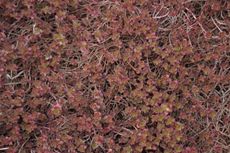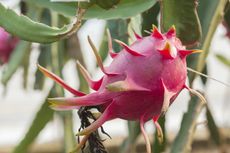Cacti & Succulents
So you want to grow cacti and succulent plants in the garden but don’t know where to start. That’s simple. Tips for growing, caring and designing with succulents and various types of cactus begins here. Use our cacti and succulent growing guide to help answer any questions you may have. There are many types of cactus and succulent plants that can be grown in the home garden, and most are easy to grow. Keep reading to learn more about designing with succulents and start creating cactus gardens that your neighbors will envy!
Explore Cacti & Succulents
Cacti & Succulents
-

Succulents and Frost: How To Save A Succulent From Frost Or Freeze
Can succulents withstand cold? Succulents and frost don't traditionally go together and can result in damage, but you may be able to save frozen succulents.
By Bonnie L. Grant
-

How To Protect Succulents And Cacti From Rain
Rain has the potential to cause damage to our cacti and succulents. However, when planted in proper soil, rainfall may perform as just a deep watering. Read on for more.
By Becca Badgett
-

Variegated Succulents To Add To Your Plant Collection
Read about some of the pretty variegated species that add beauty and interest to your succulent collection.
By Becca Badgett
-

Crassula Pagoda Plants: How To Grow Red Pagoda Crassula Plant
Red Pagoda Crassula is an easy-to-grow plant that will add punch to any succulent display or as a stand-alone specimen. Click here for tips on how to grow Red Pagoda and harness the impact of its structure and colorful foliage.
By Bonnie L. Grant
-

How To Care For Easter Cactus Houseplants
Hybridization has given us a host of beautiful and unusual plants to choose from, such as the Christmas and Easter cactus, hybrids of the Brazilian forest cactus. This article focuses on the Easter cactus plant.
By Bonnie L. Grant
-

Dragon’s Blood Stonecrop: How To Grow Dragon’s Blood Sedum Plants
Dragon's Blood stonecrop is an exciting and attractive ground cover, spreading quickly in the sunny landscape and growing happily in many areas of the U.S. Its leaves fill in during the summer to become a deep burgundy by autumn. Learn more about this plant here.
By Becca Badgett
-

How To Get Dragon Fruit: Reasons For No Fruit On Pitaya Cactus Plants
Dragon fruit is a thoroughly tropical looking fruit you may have seen in the market. This bright pink, scaly fruit comes from a long, winding cactus of the same name. But what do you do if your pitaya won?t fruit? Learn how to make dragon fruit bear fruit in this article.
By Liz Baessler
-

Pitahaya Information: Learn How To Grow Dragon Fruit
If you want to grow dragon fruit at home, you'll be rewarded not only with fruit, but also with an impressive, branching cactus vine and brilliant, night-blooming flowers. This article provides info on how to grow dragon fruit.
By Liz Baessler
-

How To Divide A Succulent: Tips For Splitting Succulent Plants
If you want succulents without shopping or shipping fees, consider splitting succulent plants. When your plants have outgrown their pots or put out lots of babies, it’s time to divide your succulents. Click here to learn more about dividing a succulent plant.
By Becca Badgett
-

Christmas Cactus Cold Tolerance - How Cold Can Christmas Cactus Get
When you think of cactus, you probably envision a desert with heat wavering vistas and blazing sun. You aren't too far off the mark but the holiday cacti actually flower better in slightly cooler temperatures. Read here for Christmas cactus cold tolerance.
By Bonnie L. Grant
-

Prickly Pear Leaf Spot: Treatment For Phyllosticta Fungus In Cactus
Phyllosticta symptoms in prickly pears are most prevalent and plants with the disease are at risk of cosmetic and vigor damage. Fortunately, once conditions dry out, the damaged areas abort the fungus and heal to a certain degree. Learn more in this article.
By Bonnie L. Grant
-

Saguaro Cactus Problems – Treating Bacterial Necrosis In Saguaro
Saguaro fall prey to a nasty infection called bacterial necrosis of saguaro. The importance of detecting and beginning treatment cannot be stressed, as the plant can live for some time with small spots of the disease, but will eventually succumb if left untreated. Learn more here.
By Bonnie L. Grant
-

What Is A Cactus Longhorn Beetle – Learn About Longhorn Beetles On Cactus
Longhorn beetles on cacti won't eat the plant, but their young can cause some damage. Cactus longhorn beetles live in the southwestern United States, especially in the Sonoran Desert. Learn more about these insects and their possible control in this article.
By Bonnie L. Grant
-

Root Knot Nematode Control: Tips For Managing Nematodes In Cactus
Root knot nematodes are very common among most cactus species. This article has more information about how to detect cactus root nematodes and the best methods for managing nematodes in cactus roots.
By Liz Baessler
-

Pythium Root Rot Treatment – Identifying Pythium Rot In Barrel Cactus
Pythium rot commonly affects barrel cacti and can be difficult to detect before it is too late to save the cactus. There are no effective methods of control of pythium rot but some prevention can be undertaken. This article will help with that.
By Bonnie L. Grant
-
Cactus Fungus Treatment – Learn About Fungal Lesions On Cactus
Fungal lesions on cacti may be caused by any number of fungal types, but the important things to note are what causes them to colonize and how to prevent their damage. Use the information from this article to help minimize or alleviate this damage.
By Bonnie L. Grant
-

What Is Agave Crown Rot: How To Save Plants With Crown Rot
Mid- to late-summer crown rot of agave plants can be common in cooler climates and potted plants. Learn what you can do for agave plants with crown rot in the article that follows. Click here for additional information.
By Darcy Larum

